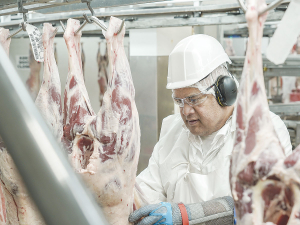BNZ: $10 milk price now unlikely for 2025/26 season
The chance of a $10-plus milk price for this season appears to be depleting.
 The outlook for lamb prices remains cautious, with BNZ’s current season forecast picking lamb prices 18% lower than the last season.
The outlook for lamb prices remains cautious, with BNZ’s current season forecast picking lamb prices 18% lower than the last season.
BNZ's latest Rural Wrap report shows lamb prices for mid-November 2023 tracking around 25% below 2022 levels.
Prices are expected to remain under downward pressure. Multiple factors are blamed for the below average results. In Australia, aggressive flock rebuilding efforts following previous La Nina weather conditions have led to the highest flock levels since 2007. Combined with below average rainfall, this has seen a more than 20% higher lamb slaughter rate in Q3 2023 compared to 2022 and an almost 35% higher adult slaughter rate.
Over recent months, Australian lamb export volumes have averaged around 18% higher than a year earlier. Aussie mutton export volumes are around 50% above that of a year ago. The significant increase in Australian export volumes has increased competition across many markets including the UK, especially following the AU-UK FTA that came into force earlier this year.
"We have previously discussed that NZ lamb prices tend to be lower during El Nino weather patterns," BNZ senior economist Doug Steel says. "This season is unfortunately shaping up in that direction; it all suggests headwinds to lamb prices will persist for some time.”
Meanwhile, key trading partners like China have seen economic growth slowdown. Sheepmeat exports to China in the year to October are down 12% to levels last seen in the 2018/19 season. However, BNZ stressed that disentangling the influence of competition on the supply side from genuine changes in overall market demand on export price and value was difficult. It says export lamb values having generally been holding up under the strain.
Steel explains that a recent lift in retail sales and evolving lamb demand in China will play an important role in determining price levels ahead, as current supply dynamics present a risk of lamb prices being lower, for longer, than some are forecasting.
He says that lower prices can introduce or reintroduce new customers to lamb products.
“While that channel will not be the catalyst for a turnaround in prices in the first instance, it can alter preferences that can have price benefits in the longer term. Let’s hope that something good can come out of the current weakness.”
The outlook for lamb prices remains cautious, with BNZ’s current season forecast seeing lamb prices 18% lower than the last season with an increasing risk that prices would dip below the $6/kg mark at some point during this season. This would be the lowest – on a dollar basis – since 2017 and the lowest since 2008 when adjusted for inflation.
Steel adds that it is worth noting that above normal supply stemming from identified weather patterns will eventually end, as has been the case in previous cycles.
“If it is a cycle we are in, and a lot of it looks that way, we can expect price improvement at some stage even if that looks some way off at this point.”
According to the latest Federated Farmers banking survey, farmers are more satisfied with their bank and less under pressure, however, the sector is well short of confidence levels seen last decade.
Farmer confidence has taken a slight dip according to the final Rabobank rural confidence survey for the year.
Former Agriculture Minister and Otaki farmer Nathan Guy has been appointed New Zealand’s Special Agricultural Trade Envoy (SATE).
Alliance Group has commissioned a new heat pump system at its Mataura processing plant in Southland.
Fonterra has slashed another 50c off its milk price forecast as global milk flows shows no sign of easing.
Meat processors are hopeful that the additional 15% tariff on lamb exports to the US will also come off.